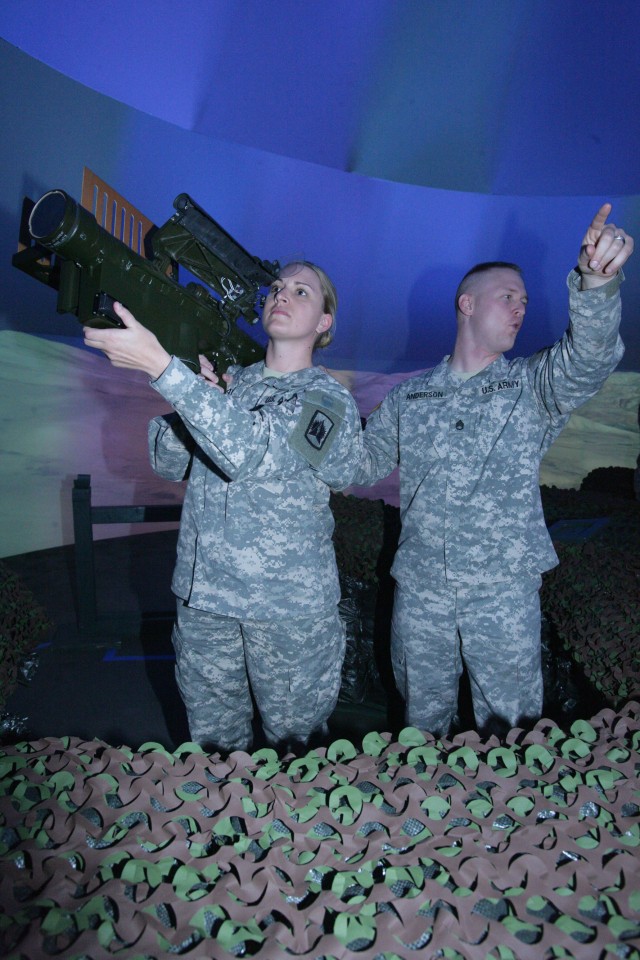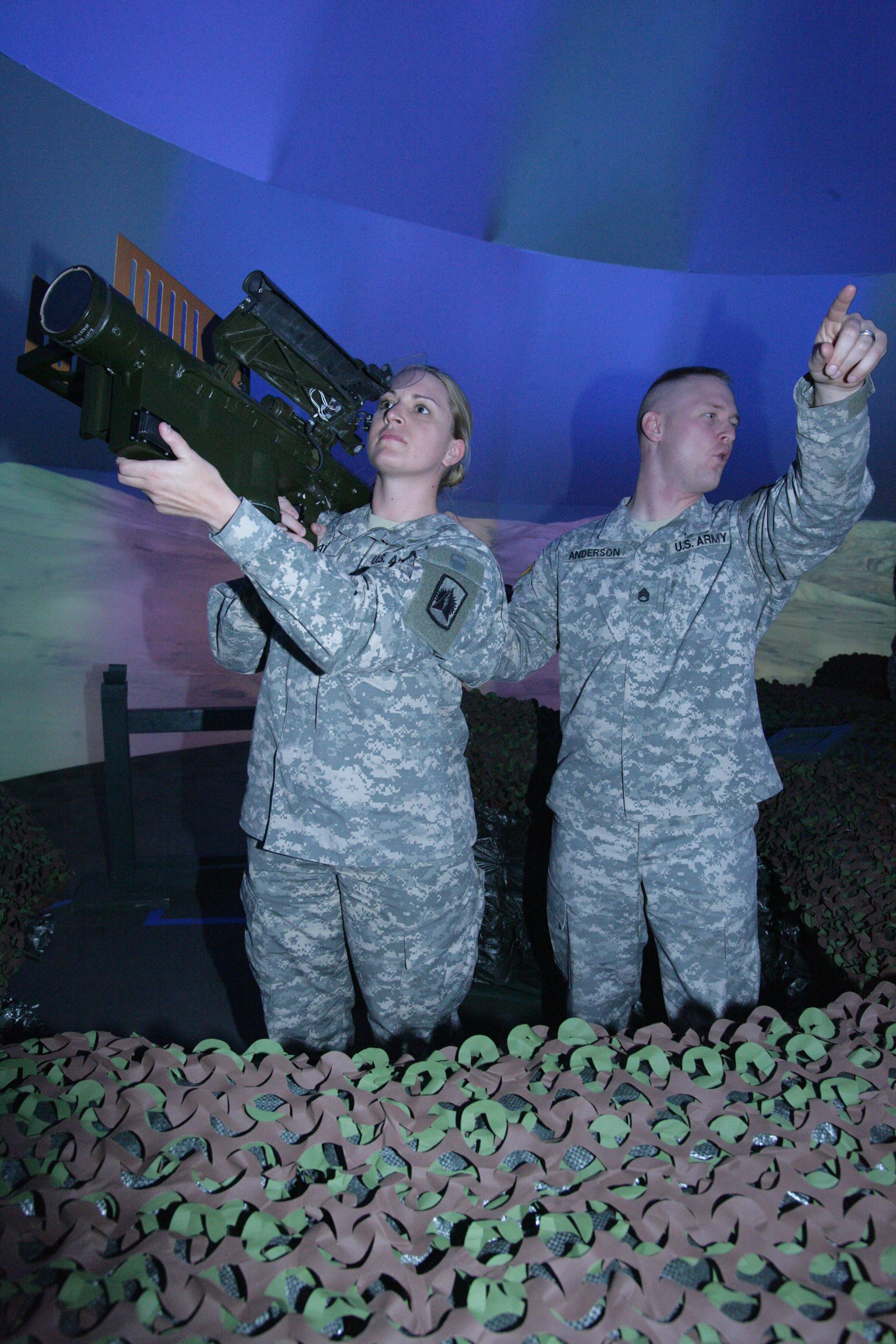
FORT SILL, Okla. -- The Air and Missile Defense career field realized a significant milestone Friday as Staff Sgt. Jessica Ray became the first woman to complete the arduous 166 hours of formal training in the six-week Avenger Master Gunner course.
Ray, a National Guardsman assigned to A Battery, 3rd Battalion, 265th Air Defense Artillery, viewed her graduation from the top-level school in the AMG career field as a huge accomplishment for women in the military.
"A few years back they allowed women into the Avenger [career field], and it's great to have this opportunity to show women are moving up and displaying our ability to keep up and do the job just as well as men," she said.
For Ray and Staff Sgt. John Anderson, Headquarters and Headquarters Battery, 3-265th ADA, their lower intensity Guard life changed dramatically after arriving at the time intensive school. It reminded her of the pace of her one-year deployment to the East Coast a year ago where she manned an air defense weapon system. She said the course was challenging as there was a lot to remember. But, a unit member who recently graduated the AMG course explained some of what they might face and gave them an idea of what to expect.
Still a relatively new course begun in 2002, it seeks to develop subject matter experts on the weapons system. These expert NCOs play a key role in their battalion's communicating the weapons system capabilities and planning all gunnery range training.
Allen Page, a master gunner instructor, helped develop and was one of the first to graduate the course during his days as an active-duty Soldier. Although his attire is now civilian, Page's vision for the course's intent hasn't changed one iota.
"We're looking for Soldiers who can rise up to the level to be a commander's adviser. They will be put on the spot and asked technical questions so they must understand the system, know how to train Soldiers on it and brief a plan and help a commander with any information needed on this weapons system," said Page.
Staff Sgt. Shawn Richardson, AMG senior instructor, said because of the high level of responsibility normally, students are either staff sergeants or sergeants first class. However, due to some manning issues this term Sgts. Frank Thomas and Eric Gowan became the first of their rank to attend. They made the most of the opportunity joining Ray and Anderson as graduates. Both sergeants are assigned to E Battery, 5th Battalion, 52nd ADA at Fort Bliss, Texas.
"This is something I've been looking forward to ever since I heard what a master gunner was and what they do," said Thomas. "Coming here getting this experience and learning a lot of what our weapons system can do means a lot to me."
Learning a lot certainly applied to the course as each student Soldier received about 40 technical manuals covering every aspect of the weapons system. The students described these manuals as being about a half-inch thick to ones that made New York City phone books look tiny. These manuals along with lessons plans became the center of group and individual study sessions which consumed much of the student's time after class and on weekends. Gowan said his roll-away suitcase served double duty as he used it to tow his manuals to and from class each day.
The coursework opened with an intense first phase then instructors backed off a bit in the second phase before reapplying the pressure in the culminating third phase.
Phase 1 centered on students learning advanced maintenance practices, how to troubleshoot the system and augment the dedicated maintainers assigned to the weapon. The intent wasn't to train master mechanics, just to give them the in-depth understanding in case problems should arise during unit training on a range. If a weapons system malfunctions, the master gunner can analyze the defective weapons system, troubleshoot and determine how quickly it should be repaired. Should the repair time be too lengthy, the master gunner can pull that weapon out and insert another vehicle to make the best use of unit training time.
Phase 2 focused on training scenarios to familiarize the students with setting up training plans for Soldiers back at their units.
In Phase 3 students developed a short-range training plan for a 90-day gunnery exercise. Richardson said the plan required each student to take six platoons of Avengers, which is 36 teams, from beginning to end of the gunnery training. Equipped only with a 50-slide computer brief, the students had to flesh out the entire plan then present it to a panel of school faculty members. The panelists evaluated each student's thoroughness of the briefing and questioned the students on their understanding and knowledge of all materials presented.
Anderson described being in the cross hairs of the probing panel.
"During the two-hour long briefing they continuously asked questions related to the training I wanted to implement in my 90-day training schedule," he said. "The entire time they were hammering me with questions."
As for whether or not one sex is better suited as a master gunner, Page said both can be good master gunners, because the position requires NCOs with in-depth knowledge of and expertise on the weapons system.
"Sergeant Ray was passionate about the weapons system and wanted to prove herself as a master gunner," he said. "Like her classmates, she was hit with a lot of instruction and expectation, but she rose up, met that challenge and can now enjoy the rewards of that success."

Social Sharing